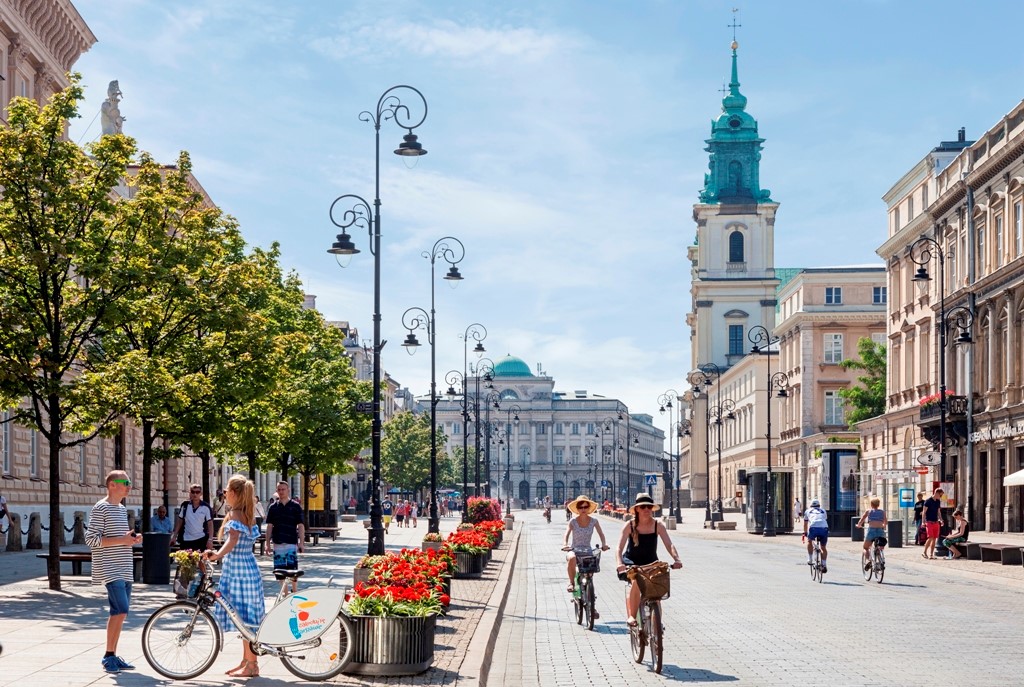The Historic Centre of Warsaw
The Historic Centre of Warsaw is an exceptional example of the comprehensive reconstruction of a city that had been deliberately and totally destroyed. The foundation of the material reconstruction was the inner strength and determination of the nation, which brought about the reconstruction of the heritage on a unique scale in the history of the world. During the War World II, more than 85% of Warsaw’s historic centre was destroyed by Nazi troops. After the war, a five-year reconstruction campaign by its citizens resulted in today’s meticulous restoration of the Old Town, with its churches, palaces and market-place. It is an outstanding example of a near-total reconstruction of a span of history covering the 13th to the 20th century.
The reconstruction of Warsaw’s historic centre was a major contribution to the changes in the doctrines related to urbanisation and conservation of cities in most of the European countries after the destructions of World War II. Simultaneously, this example illustrates the effectiveness of conservation activities in the second half of the 20th century, which permitted the integral reconstruction of the complex urban ensemble.

The reconstruction of the Old Town was a coherent and consistently implemented project devised at the Warsaw Reconstruction Office in the years 1945-1951. The reconstruction project utilised any extant, undamaged structures built between the 14th and 18th centuries, together with the late-medieval network of streets, squares, and the main market square, as well as the circuit of city walls. Two guiding principles were followed: firstly, to use reliable archival documents where available, and secondly, to aim at recreating the historic city’s late 18th-century appearance. The latter was dictated by the availability of detailed iconographic and documentary historical records from that period. Additionally, conservation inventories compiled before 1939 and after 1944 were used, along with the scientific knowledge and expertise of art historians, architects, and conservators. The Archive of the Warsaw Reconstruction Office, housing documentation of both the post-war damage and the reconstruction projects, was inscribed in the UNESCO Memory of the World Register in 2011.
Combining extant features with those parts of the Old Town reconstructed as a result of the conservation programme led to the creation of an urban space unique in terms of its material dimension (the form of the oldest part of the city), its functional dimension as a residential quarter and venue for important historical, social, and spiritual events, and its symbolic dimension.
The Historic Centre of Warsaw and all historical areas in the city are legal protection and conservation based on Polish legislation. Managing this area is the duty of the local government of the City of Warsaw. Management issues take into account the values and wishes of all stakeholders connected with the area. The principal management tools are the Management Plan and the integrated spatial planning system, based on an agreed Local Spatial Development Plan. Outlining a buffer zone of significant value in terms of historical monuments protected on the basis of the city’s spatial planning documents makes it possible to control the impact of the surroundings on this World Heritage property. The area is protected from potential threats by a system of problem identification and regular monitoring which assesses the state of preservation, ongoing conservation procedures, as well as urban, environmental, functional, and social changes.

Challenges in modernising public lighting in historical areas of Warsaw
One form of monument protection in Poland is to enter a monument in the Register of Monuments, which is maintained by the provincial conservator of monuments in a given province.
The implementation of investments in historical areas of the city of Warsaw is more difficult than in the rest of the city.
First and foremost, every single entity, even municipal units, must obtain permits from the Mazovian Provincial Conservator of Monuments. In order to obtain the relevant conservation permits, an application must be submitted, which will include, among other things, an architectural and construction design and all the necessary decisions and permits. The process is much more time-consuming than for developments in areas of the city that are not listed as monuments.
The development and character of the streets also have an impact on the implementation of investments in historical areas. Some of the streets, especially in the Old Town area, are densely built-up with a large number of residential and service establishments, including a large number of restaurants, where city life takes place virtually around the clock. The Old Town and historical areas of the city are also areas very often visited by tourists and guests.
Another challenge remains accessing the archives and obtaining the materials from which the luminaires will be designed; despite the numerous photographs we have, it is still time-consuming to familiarise ourselves with all the source materials, compare them and use them in the luminaire design process.

As part of the Smart EPC project, the Public Roads Authority is planning to replace 3,812 luminaires on 133 streets that are part of the historical areas of the City of Warsaw. The smallest number of luminaires to be replaced on one street is 2 and the largest number of luminaires is 362.
The implementation of projects in historical areas of the city of Warsaw differs significantly from the implementation of projects in other areas of the city, requires more thorough preparation and involves a longer process, but is not impossible.
